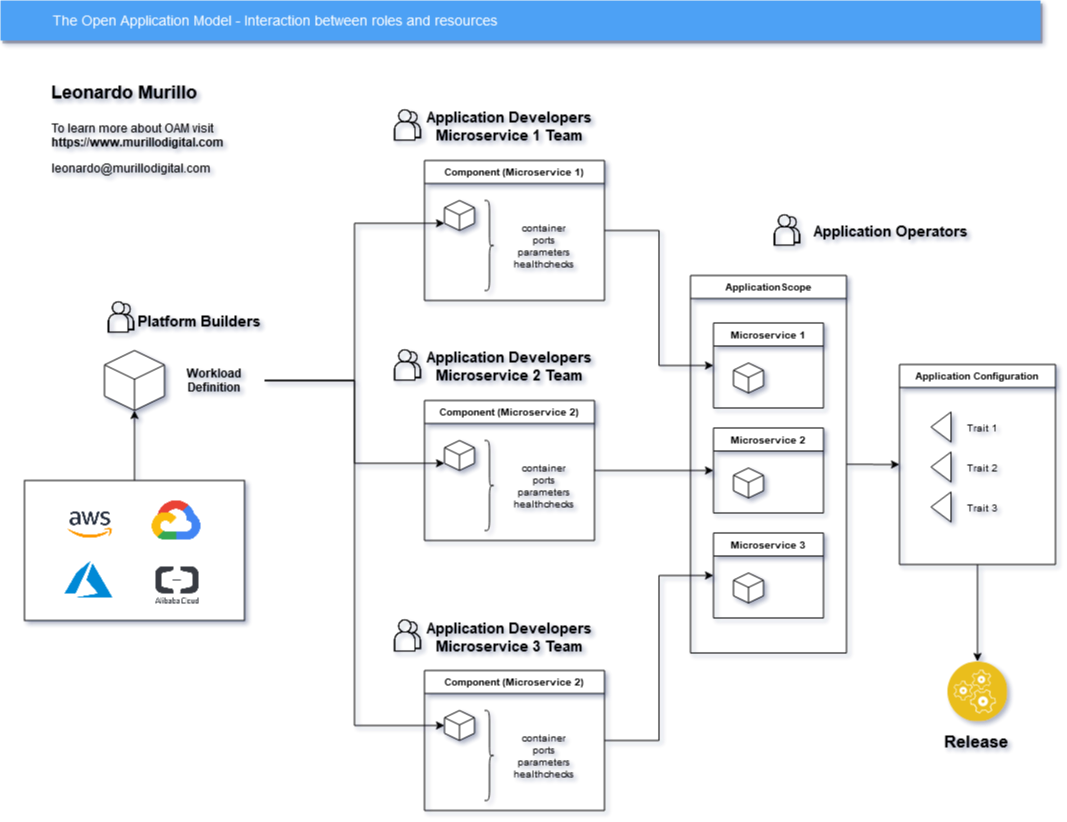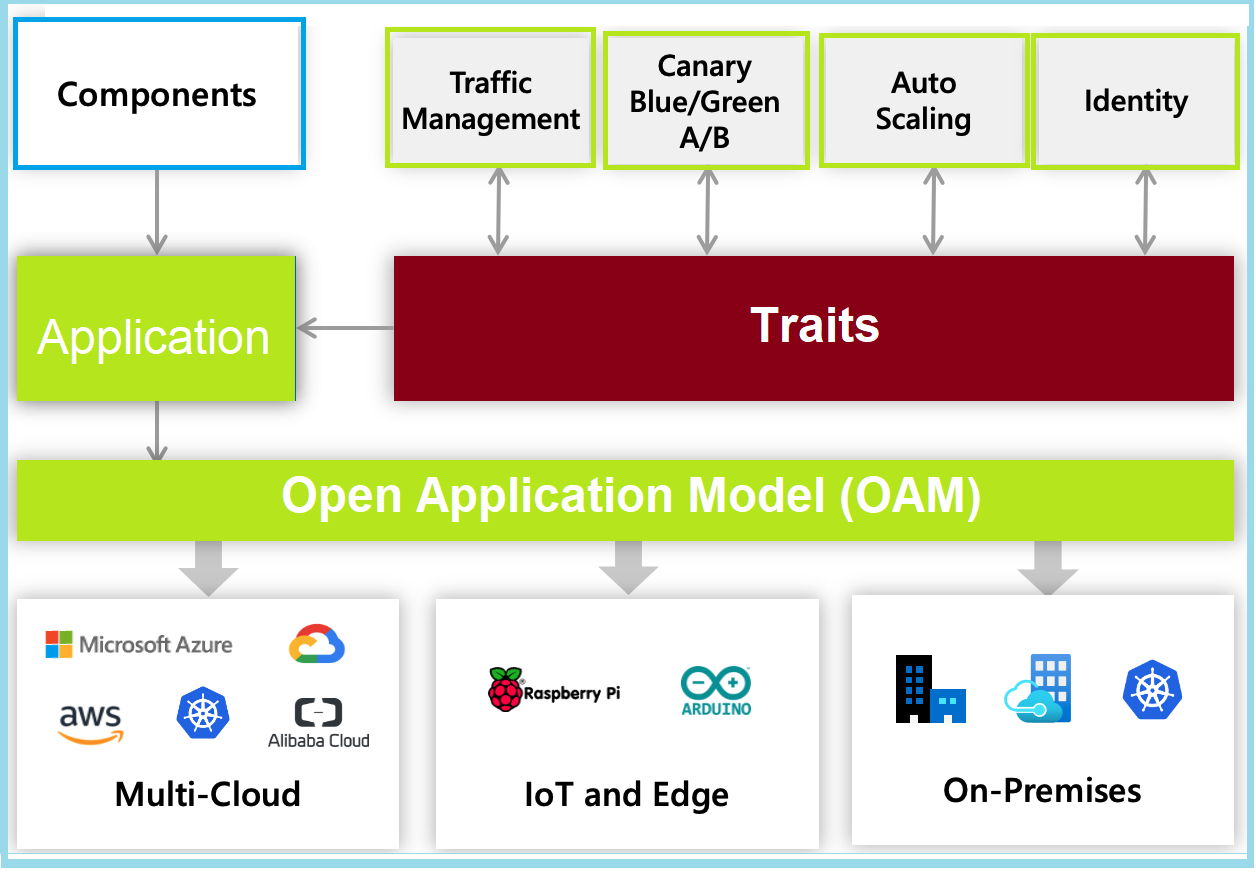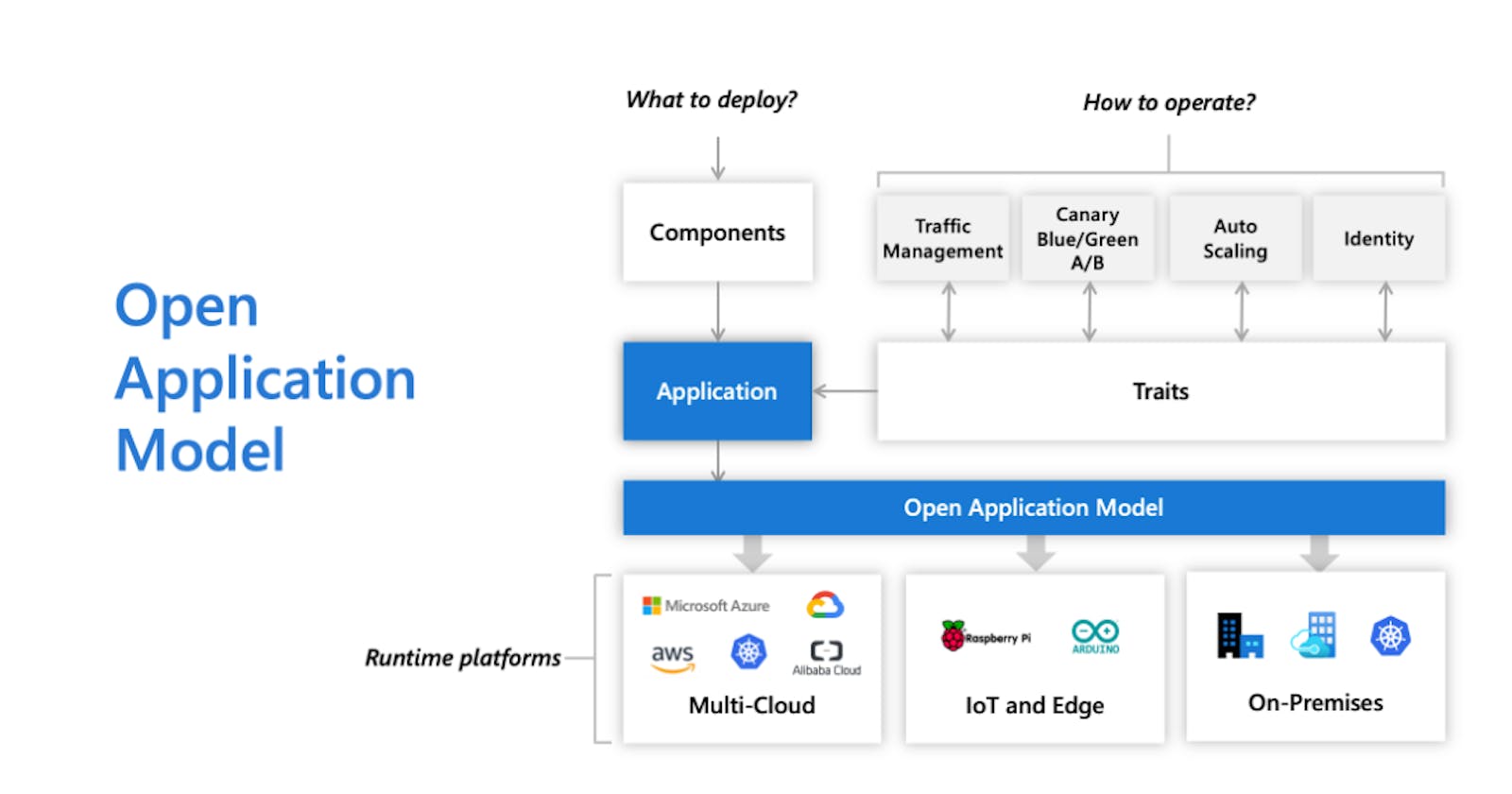Open Application Model standard and its capabilities
Streamlining Cloud-Native Application Deployment with Open Application Model (OAM)
What is Open Application Model [OPM]?
If you're new to cloud-native development and deployment, you may have heard of the Open Application Model (OAM) but aren't quite sure what it is. Simply put, OAM is a specification that provides a standardized way to describe and deploy cloud-native applications. It is based on the idea of describing an application as a set of components, each with its own configuration and deployment requirements.
This makes it easier for developers to specify the behavior of each component separately, making it simpler to manage and deploy applications. OAM also takes a declarative approach to describe applications, which means that instead of relying on scripts to manage application deployment, developers can describe the desired state of the application, and then rely on OAM controllers to manage the deployment process.
What's great about OAM is its flexibility. Because it is based on a set of APIs, it can be used with a wide range of tools and platforms, making it easier for developers to adopt OAM without having to change their existing development processes. OAM also provides support for managing multiple services, making it easier to manage complex microservice architectures. It also provides support for automated scaling, so that applications can automatically adjust to changing load conditions, and support for rolling updates, allowing new versions of the application to be deployed gradually, with minimal downtime.
Overall, OAM is an important standard for anyone working with cloud-native applications. It simplifies the deployment process and makes it easier to manage complex applications, while also providing flexibility and compatibility with a wide range of tools and platforms
History of Open Application Model [OPM]
Understanding the history of the Open Application Model (OAM) can provide valuable context for why it was developed and how it has evolved.
OAM was developed by Microsoft in collaboration with Alibaba Cloud, Red Hat, and others as a response to the challenges of managing and deploying cloud-native applications. The goal was to provide a standardized way to describe and deploy cloud-native applications, making it easier for developers to manage and deploy their applications across multiple platforms and cloud providers.
The development of OAM was influenced by other existing standards and technologies, such as Kubernetes and Docker. OAM builds on the Kubernetes API, making it easier to integrate with existing Kubernetes infrastructure. Additionally, OAM leverages the power of containerization and microservices architecture, which allows applications to be broken down into smaller, more manageable components.

Since its initial release, OAM has continued to evolve and improve. The OAM specification has been updated to include support for new features, such as automated scaling and rolling updates. Additionally, OAM has gained broader adoption within the cloud-native community, with support from major cloud providers like Amazon Web Services and Google Cloud Platform.
Understanding the history of OAM can help new developers appreciate the challenges that the standard was developed to address and the benefits it offers for managing and deploying cloud-native applications.
What is the Benefit of the Open Application Model [OPM]?
Understanding the benefits of the Open Application Model (OAM) can be key to understanding its importance. OAM provides a standardized way to describe and deploy cloud-native applications, and the benefits of using this standard are numerous.
First, OAM allows developers to focus on the components of an application, rather than the infrastructure required to run it. This means that developers can describe each component of an application separately, making it easier to manage and deploy applications. Additionally, OAM is declarative, which means that developers can describe the desired state of an application, and rely on OAM controllers to manage the deployment process.
Another benefit of using OAM is that it supports multiple services, making it easier to manage complex microservice architectures. OAM also provides support for automated scaling, allowing applications to automatically adjust to changing load conditions. Finally, OAM supports rolling updates, which means that new versions of an application can be deployed gradually, with minimal downtime.
By using OAM, developers can simplify the deployment process, reduce the risk of errors, and make it easier to manage complex applications. Additionally, OAM is flexible and compatible with a wide range of tools and platforms, which makes it easier for developers to adopt it without having to change their existing development processes.
Overall, the benefits of using OAM make it an important standard for anyone working with cloud-native applications. By understanding its benefits, developers can make more informed decisions about how to manage and deploy their applications.
What is Open Application Model standard?
Understanding the Open Application Model (OAM) standard is essential for building and deploying modern applications.
OAM is an open-source specification that provides a standardized way to describe, deploy and manage cloud-native applications. It enables developers to define their applications in a declarative way, which means that they can describe what their applications should do, rather than how they should do it. This simplifies the deployment process and allows developers to focus on the application's components, rather than the infrastructure required to run it.
The OAM standard is built on top of Kubernetes and is designed to be compatible with other cloud-native technologies such as Helm, Istio, and Knative. It provides a set of APIs for defining application components, their relationships, and the configuration required to deploy them.

One of the key benefits of OAM is that it allows developers to break down their applications into smaller, more manageable components. This makes it easier to manage and scale complex applications, particularly those that rely on microservices architecture.
Overall, the Open Application Model standard is an important standard for anyone working with cloud-native applications. It provides a simplified approach to describing, deploying, and managing applications, making it easier for developers to focus on the application components and their functionality, rather than the underlying infrastructure.
What are the capabilities of the Open Application Model?
understanding the capabilities of the Open Application Model (OAM) is essential for building and deploying modern applications.

The OAM standard provides a variety of capabilities that make it easier to manage and deploy cloud-native applications. Here are some of the key capabilities of OAM:
Declarative Application Definition: OAM allows developers to define their applications in a declarative way, which means they can describe what their application should do, rather than how it should do it. This simplifies the deployment process and allows developers to focus on the application's components, rather than the underlying infrastructure.
Component-Based Architecture: OAM enables developers to break down their applications into smaller, more manageable components. This makes it easier to manage and scale complex applications, particularly those that rely on microservices architecture.
Automated Scaling: OAM supports automated scaling, allowing applications to automatically adjust to changing load conditions. This ensures that applications can handle traffic spikes and scale down during quieter periods.
Rolling Updates: OAM supports rolling updates, which means that new versions of an application can be deployed gradually, with minimal downtime. This ensures that updates can be deployed seamlessly, without causing disruption to users.
Cross-Platform Compatibility: OAM is compatible with a wide range of tools and platforms, including Kubernetes, Helm, Istio, and Knative. This makes it easier for developers to adopt OAM without having to change their existing development processes.
Overall, the Open Application Model standard provides a variety of capabilities that make it easier to manage and deploy cloud-native applications. By understanding these capabilities, developers can make more informed decisions about how to manage their applications and take advantage of the benefits of cloud-native development.
What are the use cases of the Open Application Model?
understanding the use cases of the Open Application Model (OAM) is essential for building and deploying modern applications.

The OAM standard provides a variety of use cases that make it easier to manage and deploy cloud-native applications. Here are some of the key use cases of OAM:
Microservices Architecture: OAM is well-suited for applications that rely on microservices architecture. By breaking down applications into smaller, more manageable components, OAM makes it easier to manage and scale complex applications.
Multi-Cloud Deployment: OAM is compatible with a wide range of tools and platforms, including Kubernetes, Helm, Istio, and Knative. This makes it easier to deploy applications across different cloud providers, without having to change the underlying application architecture.
Simplified Application Management: OAM enables developers to define their applications in a declarative way, which simplifies the deployment process and allows developers to focus on the application's components, rather than the underlying infrastructure.
Automated Scaling: OAM supports automated scaling, allowing applications to automatically adjust to changing load conditions. This ensures that applications can handle traffic spikes and scale down during quieter periods.
Continuous Deployment: OAM supports rolling updates, which means that new versions of an application can be deployed gradually, with minimal downtime. This ensures that updates can be deployed seamlessly, without causing disruption to users.
Overall, the Open Application Model standard provides a variety of use cases that make it easier to manage and deploy cloud-native applications. By understanding these use cases, developers can make more informed decisions about how to manage their applications and take advantage of the benefits of cloud-native development.
Conclusion
The Open Application Model (OAM) is a powerful standard for managing and deploying cloud-native applications. It provides a declarative way to define applications, enables developers to break down applications into smaller components, supports automated scaling and rolling updates, and is compatible with a variety of tools and platforms. The OAM standard simplifies the deployment process and makes it easier to manage and scale complex applications. It is well-suited for microservices architecture, multi-cloud deployment, simplified application management, automated scaling, and continuous deployment. Overall, understanding the capabilities and use cases of OAM is essential for developers who want to build and deploy modern, cloud-native applications.


